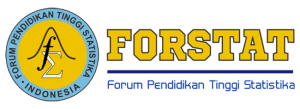Cluster Analysis Of Covid-19 Impact On Poverty In Indonesia Using Self-Organizing Map Algorithm
DOI:
https://doi.org/10.34123/jurnalasks.v14i1.389Abstract
The increase in poverty rates caused by the COVID-19 pandemic requires immediate attention from policymakers. Each province in Indonesia has unique characteristics of poverty, and as a result, each province's response to COVID-19's impact on poverty is unique. As a result, a provincial cluster analysis based on the similarity of poverty characteristics is necessary to identify provinces that require increased vigilance. The purpose of this study is to cluster Indonesian provinces according to their similarity in terms of poverty impact before and during COVID-19. The impact of poverty prior to and during COVID-19 is quantified by comparing 2021 (during COVID-19) to 2019 (before COVID-19). We discovered that the COVID-19 has a significant impact on poverty. Hybrid SOM-Kmeans with three clusters is the optimal method for producing the smallest Davies-Bouldin Index. COVID-19 has high, moderate, and low impact on poverty, respectively. Cluster 1 is a cluster with a significant impact on poverty in a province where tourism is the primary industry. Due to sluggish tourism, the community's purchasing power is diminished, thereby increasing poverty. Cluster 3, namely Papua, has a low impact due to its primary sector characteristics in the mining sector.
Downloads
References
[2] Tarigan H, Sinaga J H and Rachmawati R R 2020 Dampak Pandemi Covid-19: Perspektif Adaptasi dan Resiliensi Sosial Ekonomi Pertanian (Jakarta: IA ARD)
[3] Yusuf A A 2020 Poverty and distributional impact of Covid-19 crisis in Indonesia SDGs Center (Bandung: Universitas Padjadjaran)
[4] Johnson R and Wichern D 2014 Applied Multivariate Statistical Analysis (Sixth Edition) (Edinburg: Pearson)
[5] Han J, Kamber M and Pei J 2012 Data Mining: Concepts and Techniques (USA: Morgan Kaufmann)
[6] Ferezagia D V 2018 Analisis tingkat kemiskinan di Indonesia Jurnal Sosial Humaniora Terapan 1 1 pp 1-6
[7] Sano A V D and Nindito H 2016 Application of K-Means Algorithm for Cluster Analysis on Poverty of Provinces in Indonesia ComTech 7 2 pp 141-150
[8] Bahauddin A, Fatmawati A and Sari F P 2021 Analisis clustering provinsi di indonesia berdasarkan tingkat kemiskinan menggunakan algoritma k-means Jurnal Manajemen informatika dan Sistem Informasi 4 1 pp 1-8
[9] Kohonen T 2001 Self-Organizing Maps (Berlin: Springer Series in Information Sciences)
[10] Kaski S and Kohonen T 1995 Exploratory data analysis by the Self-Organizing Map: structures of welfare and poverty in the world the Third International Conference on Neural Networks in the Capital Markets (London)
[11] Wilcoxon F 1945 Individual Comparisons by Ranking Methods Biometrics Bulletin 1 6 pp 80-83
[12] Badran F, Yacoub M and Thiria S 2005 Self-organizing maps and unsupervised classification Neural networks pp 379-442
[13] Asan U and Ercan S 2012 An introduction to self-organizing maps Computational Intelligence Systems in Industrial Engineering: with Recent Theory and Applications (Paris: Atlantis Press) pp 295-315.
[14] Bates A and Kalita J 2016 Counting clusters in twitter posts Proceedings of the 2nd International Conference on Information Technology for Competitive Strategies
[15] Starczewski A 2017 A new validity index for crisp clusters Pattern Analysis and Applications 20 pp 687–700
[16] Wehrens R and Buydens L M C 2007 Self- and Super-organizing Maps in R: The kohonen Package J. of Stat. Software 21 5 pp 1-19
[17] Pramana S, Paramartha D Y, Ermawan G Y, Deli N F and Srimulyani W 2021 Impact of COVID-19 pandemic on tourism in Indonesia Current Issues in Tourism 24















